If you’re looking for a furry companion to join your family, you’re likely aware of the many varieties of “doodle” breeds available. In particular, the Double Doodle and Labradoodle are two of the most popular breeds. But what makes them different? Is one better than the other? Let’s take a closer look!
Visual Differences
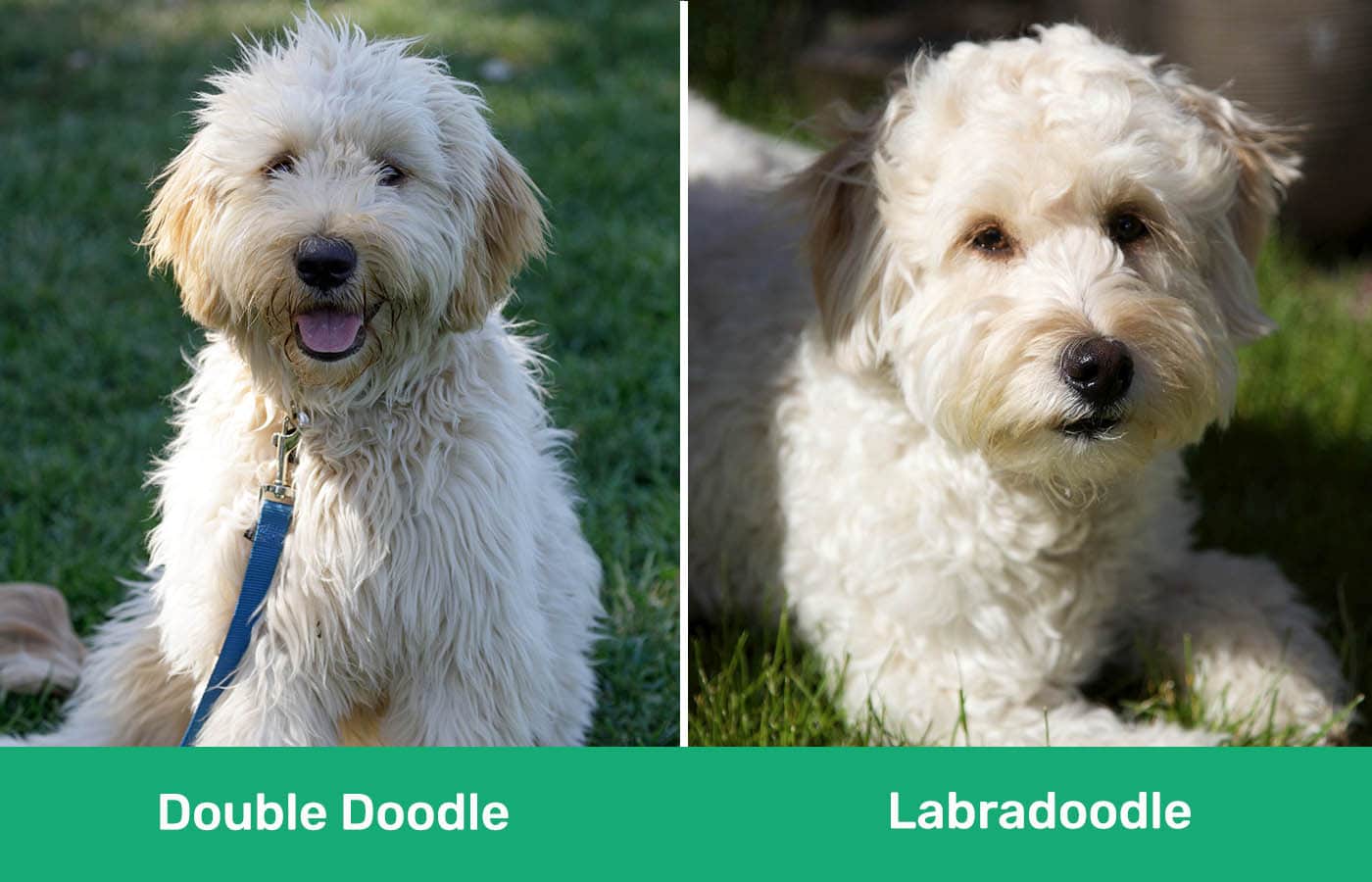
At a Glance
- Average height (adult): 22–25 inches
- Average weight (adult): 50–90 pounds
- Lifespan: 12–15 years
- Exercise: 1+ hours a day
- Grooming needs: Moderate
- Family-friendly: Yes
- Other pet-friendly: Often
- Trainability: Highly intelligent, loyal, eager to please, very obedient, enjoy being given commands and learning new things
- Average height (adult): 21½–24½ inches
- Average weight (adult): 50–65 pounds
- Lifespan: 12–15 years
- Exercise: 1+ hours a day
- Grooming needs: Moderate
- Family-friendly: Yes
- Other pet-friendly: Often
- Trainability: Highly intelligent, loyal, easy to train, very obedient and enjoy learning new things
 Double Doodle Breed Overview
Double Doodle Breed Overview

The Double Doodle breed, also known as the North American Retriever, is a popular crossbred dog that combines the best traits of the Labradoodle and the Goldendoodle. This breed is relatively new, and its exact origin is not very clear. However, the Double Doodle has quickly become one of the most beloved breeds and is a highly desirable family pet due to its affectionate nature, playful personality, and hypoallergenic coat.
Physical Characteristics
Double Doodles can come in a wide range of coat lengths and color variations, just like their parent breeds. They have a soft, curly, wavy, or straight coat that can be solid or multicolored. The most common coat colors include cream, apricot, red, black, brown, and golden. They usually have a medium-sized frame with an athletic build, floppy ears, and a friendly face.
Temperament
Double Doodles are usually very friendly, affectionate, and social, making them perfect pets for families. They are highly intelligent and enjoy physical and mental stimulation, including playing, going for walks, and learning new tricks. They are also gentle and can get along well with children and other pets if socialized properly.
Exercise Requirements
Double Doodles are a highly energetic breed, and they require plenty of daily exercise to maintain their health and well-being. They need at least 1 hour of moderate to intense exercise per day, such as running, jogging, swimming, or playing in the park. They also enjoy activities that engage their minds, such as puzzle toys and training sessions.
Grooming Requirements
Double Doodles have a moderate amount of grooming requirements since their coats tend to be long, curly, and fluffy. They need to be brushed regularly, at least once a week, to keep their coats from becoming tangled, matted, or dirty. Owners also need to schedule grooming appointments with a professional every few months for trims and nail clipping.

Common Health Issues
Like all breeds, Double Doodles are prone to certain health issues, and pet parents need to stay on top of any potential health concerns. The most common health problems include hip dysplasia, ear infections, skin allergies, and eye issues. Regular health checkups with a veterinarian, a balanced diet, and proper exercise can help prevent these conditions and keep Double Doodles healthy.
Trainability
Double Doodles are highly trainable due to their intelligence and eagerness to please. They can learn basic commands quickly, such as sit, stay, come, and heel. Owners should use positive reinforcement methods when training Double Doodles since they tend to respond better to rewards than punishments. With consistency and patience, Double Doodles can learn more complex behaviors such as retrieving, walking on a leash, and playing games.
Size and Weight Range
Double Doodles are typically classified as medium to large-sized dogs with a weight range of 50 to 90 pounds, with a height range of 22 to 25 inches at the shoulder. Their size and weight can vary significantly depending on the size of their parent breeds.
Lifespan
The Double Doodle has a lifespan of 12 to 15 years if given proper care, nutrition, and exercise.
Variations
The Double Doodle breed has a few notable variations, including the F1B Double Doodle, the Australian Double Doodle, and the Miniature Double Doodle. The F1B Double Doodle is a cross between an F1 Double Doodle and a Poodle, while the Australian Double Doodle has an Australian Labradoodle parent instead of a Labradoodle. The Miniature Double Doodle, as the name suggests, is a smaller version of the standard Double Doodle and is a cross between a Miniature Poodle, a Miniature Goldendoodle, and a Miniature Labradoodle.
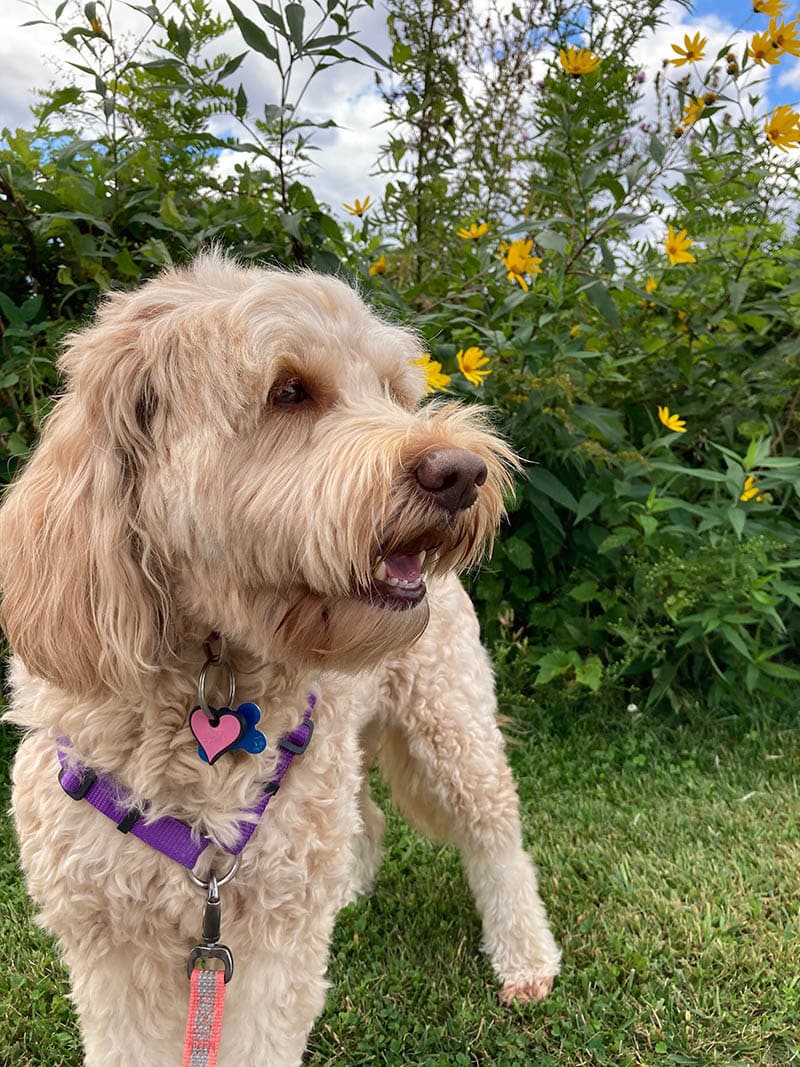
Best Suited For:
Double Doodles are great family pets and make excellent companions for active households. They are highly trainable and can be relatively easy to maintain with proper grooming, exercise, socialization, and nutrition. They usually get along well with children and other dogs if given the right training and attention. However, they require plenty of daily exercise to stay healthy, so they are best suited for active households. All in all, this breed is a great choice for families looking for an intelligent, affectionate doodle companion.
- Highly intelligent and trainable
- Friendly and affectionate
- Good with children and other pets
- Moderate grooming requirements
- Well-suited for active households
- Needs plenty of daily exercise to stay healthy
- Prone to certain health issues if not well taken care of
Labradoodle Breed Overview
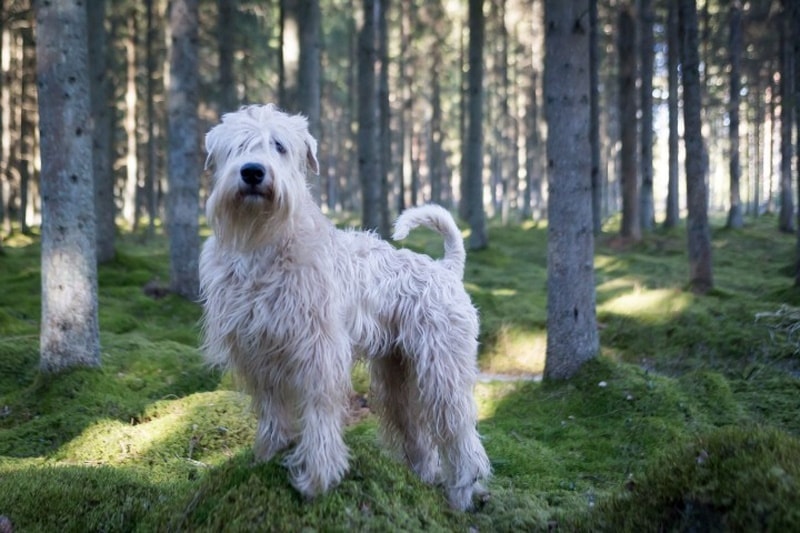
The Labradoodle is a beloved crossbreed that combines the genes of a Labrador Retriever and a Poodle. This hybrid dog breed was initially developed in 1989 by the Royal Guide Dogs Association in Australia. Today, the Labradoodle is one of the most popular breeds for families as they possess a friendly and affectionate nature, a hypoallergenic coat, and a winning personality.
Physical Characteristics
Labradoodles come in a variety of sizes, ranging from miniature to standard. These dogs have a wavy or curly coat that is often light in color but can also be black, silver, or multicolored. They usually have large, expressive eyes and floppy ears that add to their endearing appearance.
Temperament
Labradoodles are friendly, intelligent, and loyal companion animals that make them a sought-after pet by families and individuals alike. They are also incredibly social dogs and thrive when given plenty of attention and affection. Furthermore, they have a love for people, other dogs, and animals in general, making them an excellent choice for households with children or other pets.
Exercise Requirements
Labradoodles are moderately energetic; They require at least 30 minutes to 1 hour of exercise per day to remain healthy and happy. They enjoy running, playing fetch, swimming, and hiking, among other activities. Providing adequate exercise opportunities also prevents the development of destructive or anxious behaviors that could manifest from a lack of stimulation.
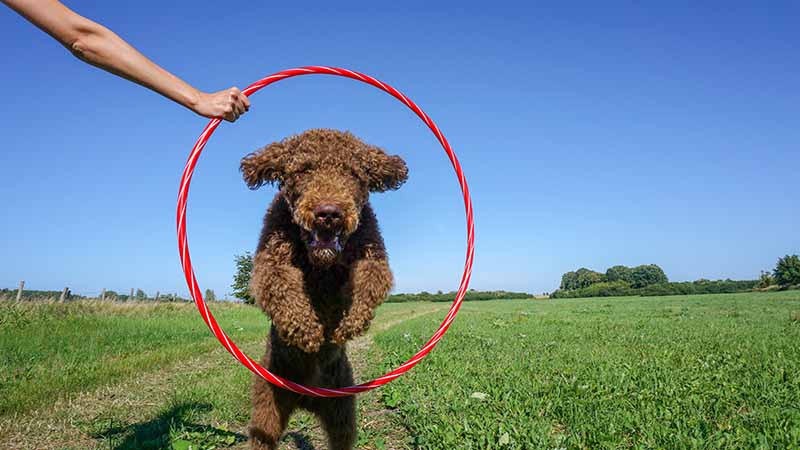
Grooming Requirements
Labradoodles have a moderate amount of grooming requirements. They need to be brushed regularly, at least twice a week, to keep their coats from becoming tangled or matted. Trimming is also required every 2 to 3 months to give their fur shape and a clean look.
Common Health Issues
While generally healthy, Labradoodles are prone to certain health problems such as hip dysplasia, ear infections, and eye problems. Regular visits to the vet, proper nutrition, exercise, and grooming can go a long way in keeping a Labradoodle healthy.
Trainability
Labradoodles are highly intelligent and can be easily trained with consistency, patience, and positive reinforcement. They thrive on praise and rewards for learning new things and quickly become devoted family members. They’re regularly used as service dogs because of their intelligence and trainability.
Size and Weight Range
The size and weight of a Labradoodle vary greatly, depending on the size of its Poodle parent. The breed has three primary sizes: Standard, Medium, and Miniature. The weight range for a standard Labradoodle is typically between 50 to 65 pounds, while the miniature weighs between 15 to 25 pounds.

Lifespan
The Labradoodle has a lifespan of 12 to 15 years, with full participation in regular checkups, exercise, and proper nutrition.
Variations
There are a few notable variations of Labradoodles, including the Australian and American Labradoodles. Australian Labradoodles are bred using earlier generations of Labradoodles with infused DNA from Spaniels and Setters, resulting in a dog with more consistent hypoallergenic coats. While the American Labradoodle has Labradoodle parents exclusively.
Best Suited For:
Labradoodles are perfect for active households that can provide them with plenty of physical and mental stimulation. They require moderate exercise, grooming, and attention to stay healthy and happy. They make excellent family pets if given the proper care due to their loving temperaments. Additionally, their hypoallergenic coats make them an ideal choice for people who suffer from allergies.
- Intelligent, loyal, and affectionate
- Hypoallergenic coat
- Ideal for active households
- Great with children and other pets
- Require regular grooming
- Prone to certain health problems
- It can be destructive if not given enough stimulation or exercise
Which Breed Do I Choose Between Double Doodles and Labradoodles?
There’s really no wrong choice! If you are looking for a playful, social, intelligent, hypoallergenic pet, then the Labradoodle might be your best choice. They require moderate exercise, grooming, and attention to stay healthy and happy and make great family pets with their loving temperaments. On the other hand, if you are looking for a larger dog with more consistent coat characteristics from generation to generation, Double Doodles may be the better option for you. Double Doodles have been bred using earlier generations of Labradoodles combined with Spaniels and Setters to create a dog that is even more hypoallergenic than Labradoodles. Ultimately it comes down to personal preference when choosing between these two popular designer breeds.
Conclusion
The Labradoodle is a popular designer breed that has become increasingly more popular over the years due to its lovable and intelligent personality. They make beloved family pets, as they are affectionate, loyal, and hypoallergenic. With regular grooming, exercise, and attention, they can thrive in both active and relaxed households. The Labradoodle may be the perfect choice for those looking for a great companion without sacrificing allergies! In comparison to Double Doodles, which have been bred using earlier generations of Labradoodles combined with Spaniels and Setters, Labradoodles are still well known for their hypoallergenic coats but may require additional maintenance when it comes to brushing and trimming.
See also:
- Golden Retriever vs Labradoodle: Surprising Differences (With Pictures)
- Portuguese Water Dog vs Labradoodle: Notable Differences (With Pictures)
Featured Image Credit: (T) Juli V, Shutterstock | (B) Justin Sienkiewicz, Shutterstock
Contents
- Visual Differences
- At a Glance
- Double Doodle Breed Overview
- Physical Characteristics
- Temperament
- Exercise Requirements
- Grooming Requirements
- Common Health Issues
- Trainability
- Size and Weight Range
- Lifespan
- Variations
- Best Suited For:
- Labradoodle Breed Overview
- Physical Characteristics
- Temperament
- Exercise Requirements
- Grooming Requirements
- Common Health Issues
- Trainability
- Size and Weight Range
- Lifespan
- Variations
- Best Suited For:
- Which Breed Do I Choose Between Double Doodles and Labradoodles?
- Conclusion

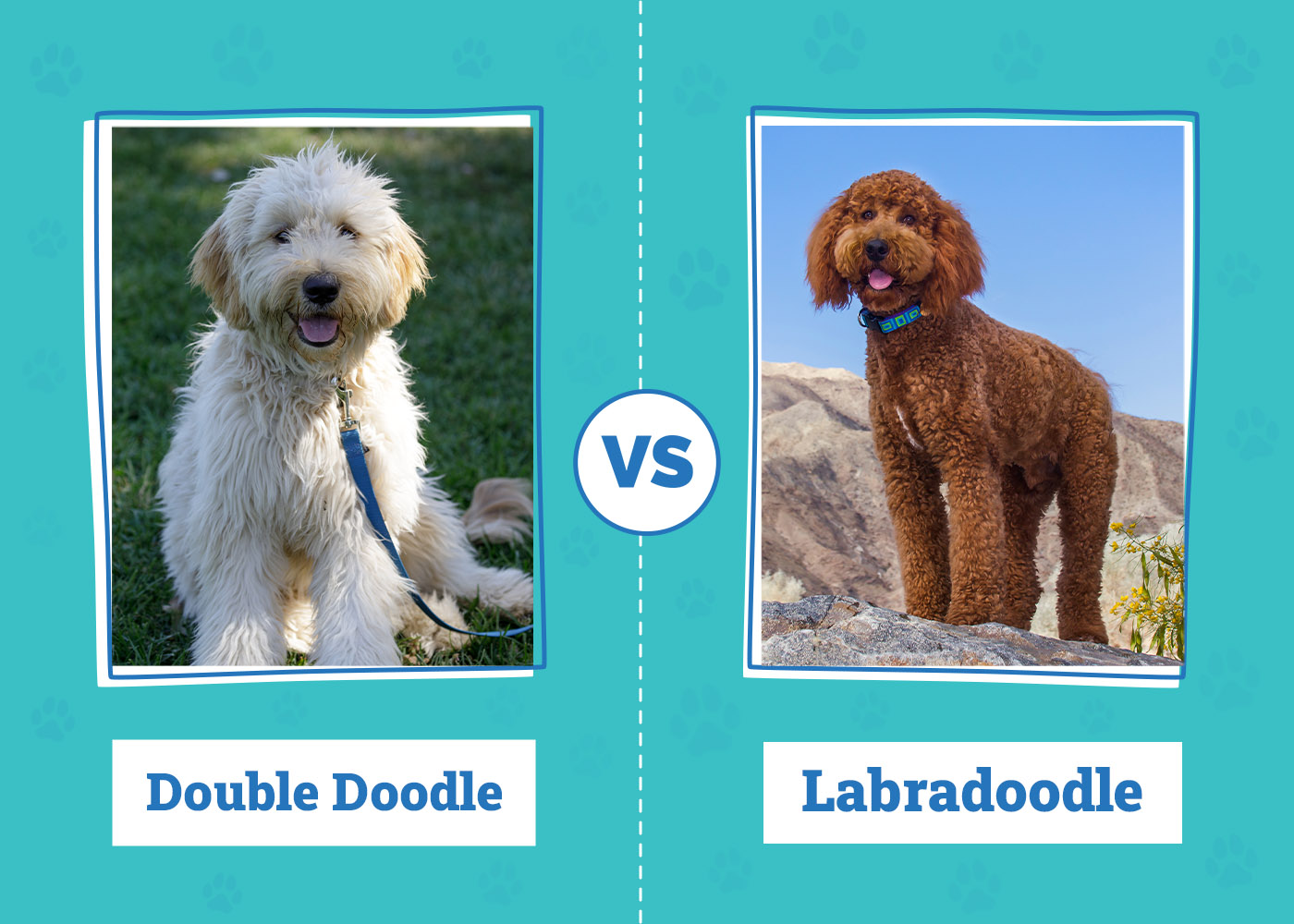
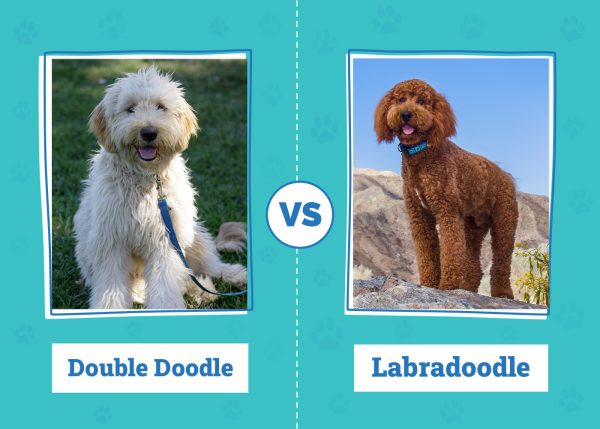

 Double Doodle Breed Overview
Double Doodle Breed Overview







